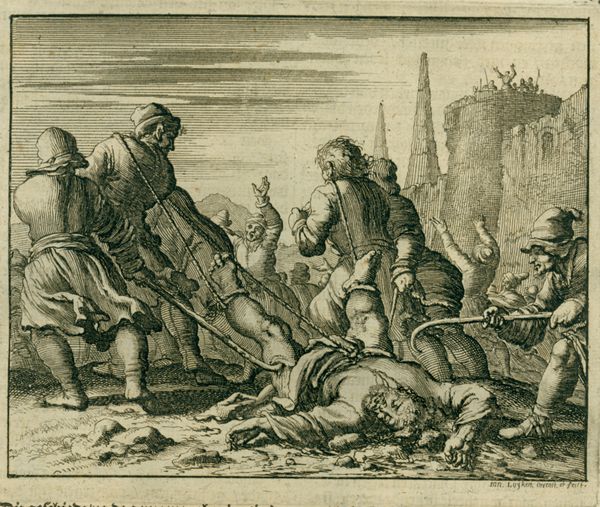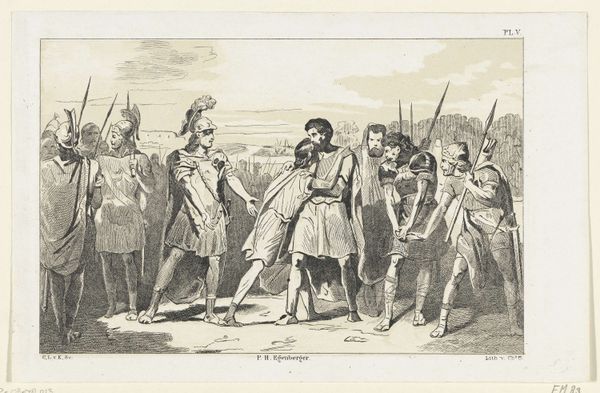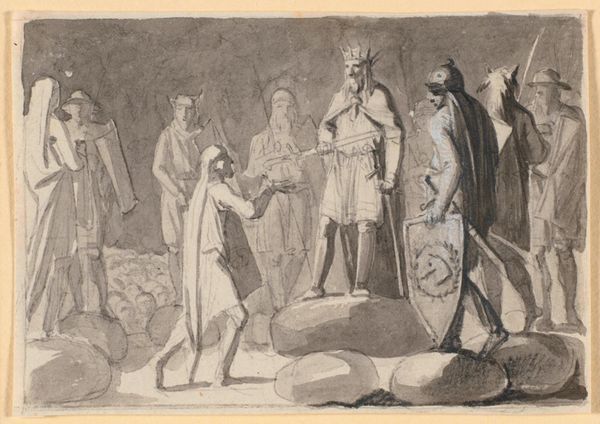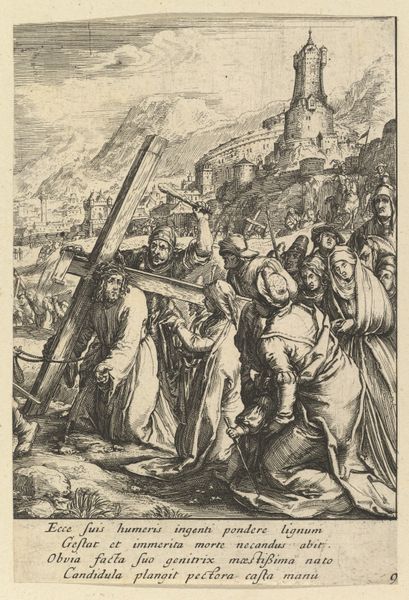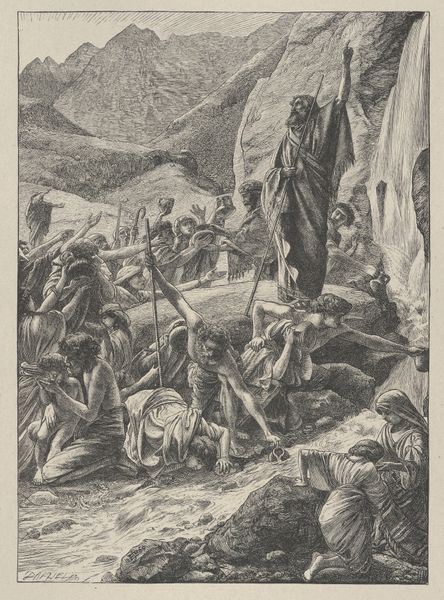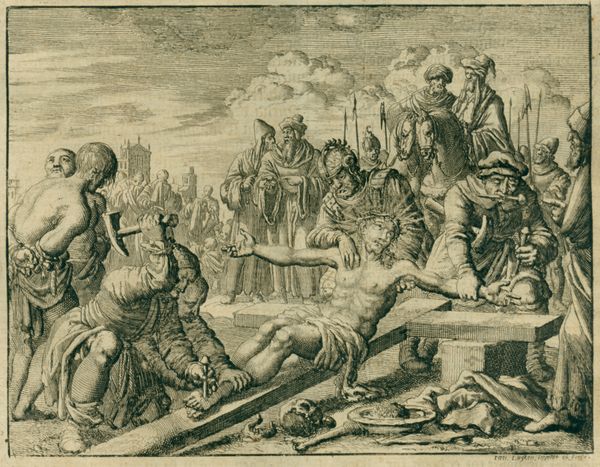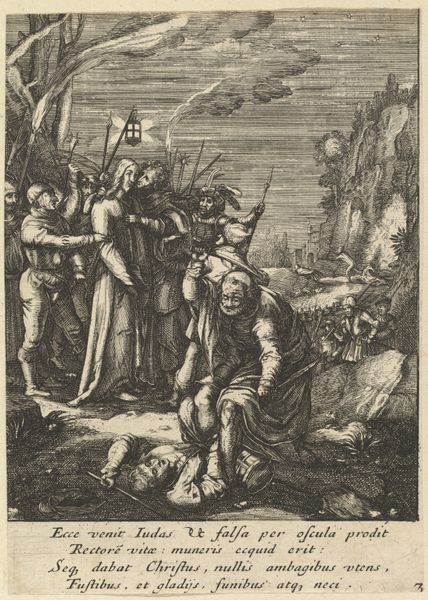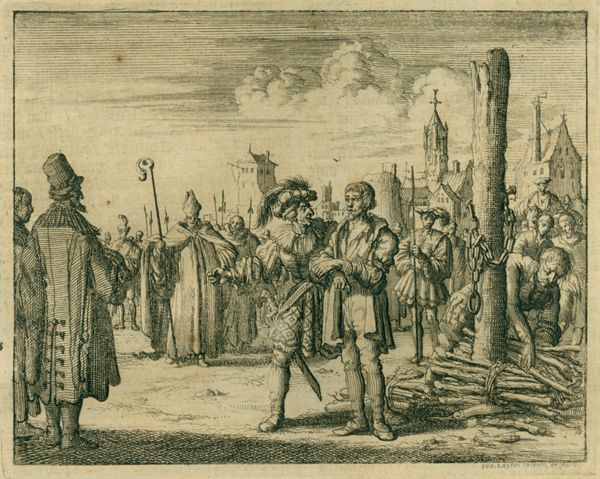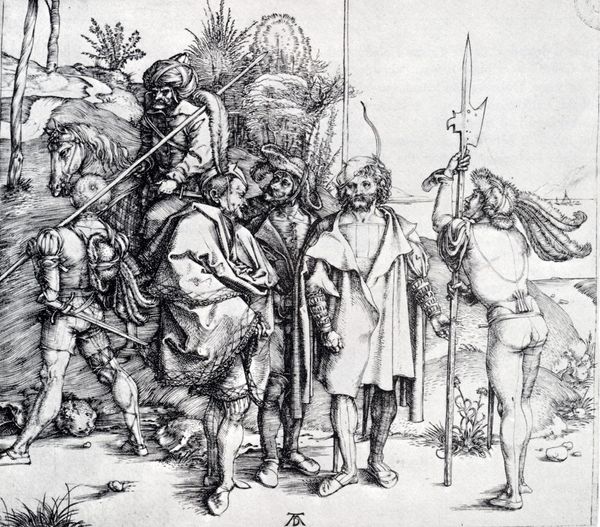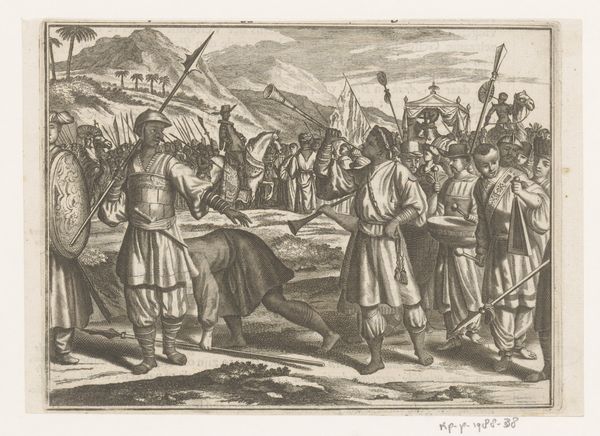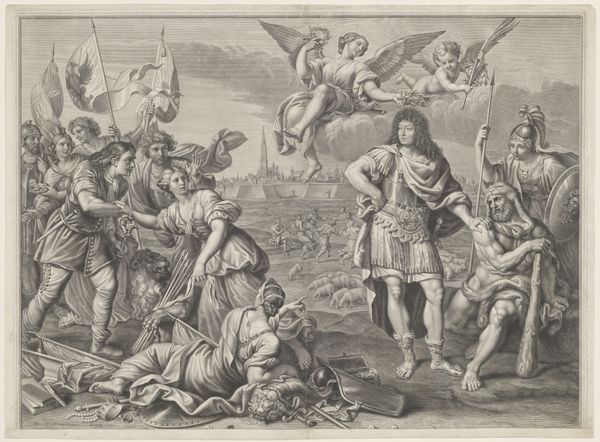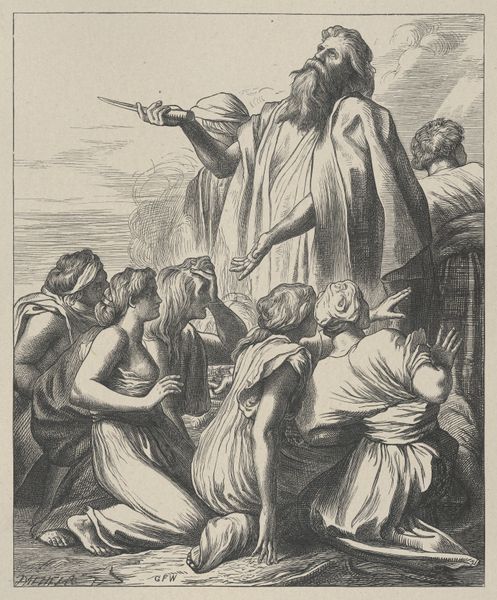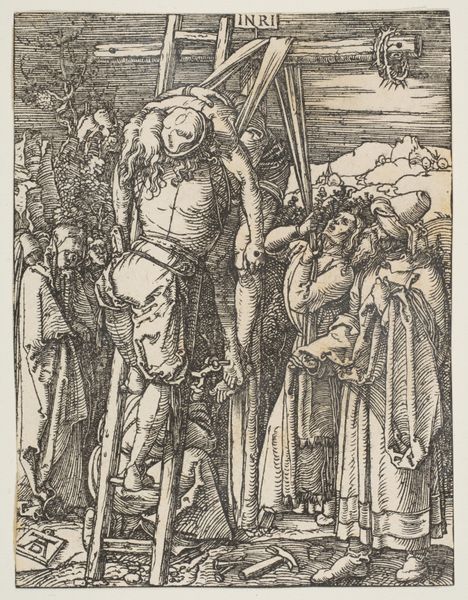
Titelvignet til "Lexicon over adelige Familier i Danmark, Norge og Hertugdømmerne" 1785
0:00
0:00
Dimensions: 90 mm (height) x 138 mm (width) (bladmaal)
Editor: So, this is the "Titelvignet til 'Lexicon over adelige Familier i Danmark, Norge og Hertugdømmerne,'" an engraving by Georg Christian Schule from 1785. It depicts some sort of historical ceremony, and the line work is very fine. What jumps out at you? Curator: What intrigues me is how the medium itself, printmaking, relates to the "Lexicon" it precedes. The mass-producible nature of engraving speaks to a burgeoning interest in documenting and distributing knowledge about noble families beyond the elite. Consider the labor involved: the engraver meticulously recreating images for broader consumption. Does the "romanticism" they tag this as fully capture the democratizing element? Editor: I hadn't thought of that angle. I was focused on the composition, but you're right, printmaking does enable wider accessibility. Was there a demand for this sort of genealogical record outside of aristocratic circles? Curator: Exactly! This challenges our understanding of Romanticism. Is it purely escapist fantasy, or also linked to new methods of production, enabling history and lineage to be treated as commodities? The "history painting" theme, rendered as a print, suddenly highlights a shift in how historical narratives were produced and consumed. Consider the economics involved in Schule creating this image. Editor: That is interesting. I see your point about romanticism maybe being tied more with mass production and consumption than just “escapist fantasy”. Did the material constraints of engraving, like the size of the printing plate, perhaps dictate the style? Curator: Possibly, but let’s reframe that. The 'constraint' is also its possibility. Its affordability and reproducibility is why this image exists at all. That is, the constraint enabled the expansion of its readership, driving a kind of demand we wouldn't have had otherwise. Editor: Okay, that’s given me a lot to consider. So, seeing it as just “Romanticism” overlooks the influence of new production methods, transforming how people engaged with history and lineage. Thanks! Curator: Indeed. Reflecting on this intersection challenges established art historical categories. There’s always more to see.
Comments
No comments
Be the first to comment and join the conversation on the ultimate creative platform.
